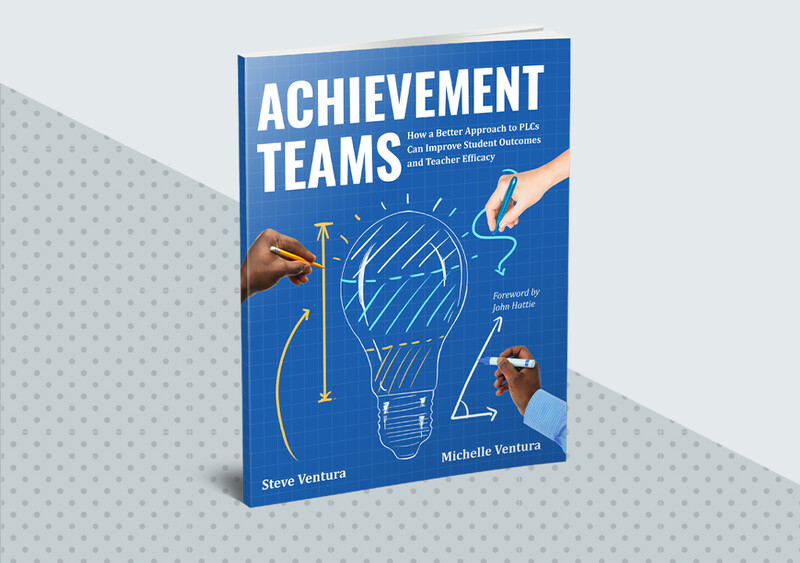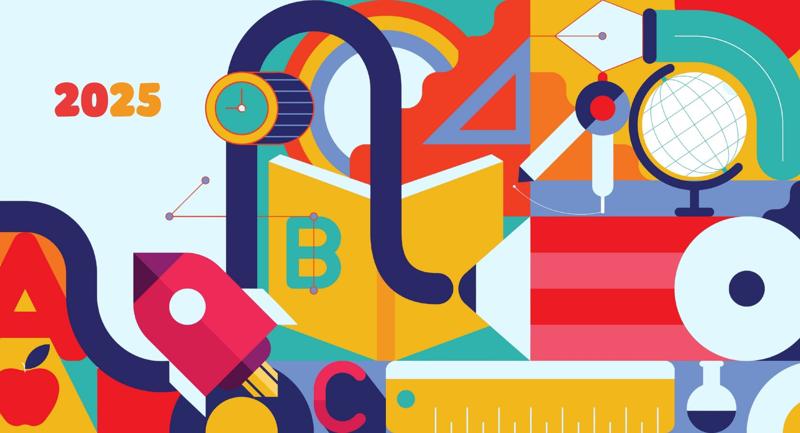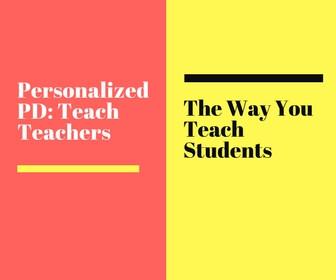Collaboration, when done well, is one of the most powerful professional learning practices available to educators today. And we’re not talking about “collaborative” meetings where teachers check off boxes and have surface-level discussions about tasks related to teaching and learning. We believe in collaboration that moves the needle on both teaching practice and student learning.
Sadly, many teachers and leaders have not had the resources or professional development support to effectively engage in meaningful collaboration. Instead, educators join teacher teams or professional learning communities (PLCs) and are expected to collaborate without any real direction or support. Structure must replace these loose guidelines.
When school and district leaders support teacher collaboration, honor meeting time, and participate as instructional champions, real change can happen, and collective teacher efficacy is born.
A New Approach to PLCs
We strongly believe in the PLC structure, but as a current educator (Michelle) and a former educator and school and district leader (Steve), we’ve seen countless examples of PLCs that aren’t cultivated and fail to work. This happens when teams often aren’t given clear guidelines or protocols to follow and leaders aren’t actively supporting these initiatives.
In our book Achievement Teams: How a Better Approach to PLCs Can Improve Student Outcomes and Teacher Efficacy, we describe a collaborative model that follows a four-step protocol called Achievement Teams—where educators review student data to make decisions about instruction and teaching practices that need to shift to best meet student needs. We developed Achievement Teams because this process provides the structure and foundation that many PLCs and educator teams are missing. The Achievement Teams model doesn’t replace other collaborative protocols such as PLCs, Data Teams, etc. Instead, it provides a four-step framework focused on teacher practice and student outcomes that can be followed by any type of teacher team.
Through this method of collaboration, teachers begin to understand and discuss how instructional actions impact student outcomes and collectively identify how to improve assessment, shift instruction, and ultimately impact student achievement.
The Four Steps of Achievement Teams
Step 1: Collect and chart the data.
Achievement Teams focus on evidence from quality short-cycle assessments. Here are a few characteristics of short-cycle assessments:
- They should be short and focused on a few learning targets (depending on rigor, 7-10 items on the assessment).
- They should align with concepts and skills from each learning target.
- They are not typically graded, but specifically designed to provide feedback to students.
- They are created at the correct level of rigor and complexity.
- They are not meant to assess everything.
- They are a combination of selected response and short-constructed response items.
- They are created by teacher teams and can be scored quickly.
Step 2: Set SMART goals.
Creating improvement goals for both students and teachers has a tremendous effect on academic outcomes. Goals motivate both students and teachers to exert extra effort in line with a specific task. They also have a self-energizing effect, especially if they are set at an appropriate level of rigor. In order for students to experience self-determination, they must be taught how to set their own goals. This way the goals have much more meaning.
Step 3: Create baseline evidence statements.
Summarizing collected data helps educators make inferences around students’ mastery levels. These statements assist teachers to reflect on their practice, especially as they review assessment results. This structured team process helps teachers identify factors that cause a problem before attempting to solve the problem.
Step 4: Select high-yield instructional strategies.
Teachers select the strategies that will have the greatest impact on student achievement and they should have access to contemporary research highlighting these strategies. This process provides a structure for teachers to accurately reflect on their practice between pre- and post-assessments and then work together to decide on the best corrective instructional approach in response to those identified needs.
Leaders in the building play a critical role in ensuring this protocol works effectively. It's not enough to sit at the same table with a team and observe their collaboration. The Achievement Teams’ space is meant to build positive collaboration and to allow educators the time to reflect on and improve practices. Teachers feel appreciated when leaders commit to deep implementation of practices that have the most significant effect. They monitor collaboration time, visit classrooms, and participate in teacher learning, becoming a valuable resource for teachers. Achievement Teams do not compete with PLCs, they add value to any collaborative wishing to elevate their collective efficacy.
Getting Started, and Staying on Track
Getting any new professional learning initiative off the ground requires the support of all stakeholders. Here are three strategies to launch Achievement Teams, or any professional learning initiative, with fidelity:
1. Praise the Effort, Not the Achievement
It’s often too easy to quit an initiative because we fail to see impact. When it comes to teacher collaboration, leaders have to praise the effort and point out the wins as they may not be as evident to the participants. Collaborative protocols can feel uncomfortable or threatening to even the most seasoned educators.
Celebrate the successes you see, even if they are small. For example, your teams are hopefully meeting consistently and honoring this time. They may be starting to collect and chart student data based on short-cycle assessments. Doing this with consistency is a success. Encourage teams to then set SMART goals and create baseline evidence statements, acknowledging that these will be new challenges for the team to navigate together.
Celebrate the successes you see, even if they are small.
2. Ensure Teachers Feel Valued
An essential Achievement Teams component is that leaders and teachers thrive in a climate of mutual respect and interdependence. Collaboration among teachers is highly encouraged, as it allows them to celebrate each other's accomplishments, find ways to work through difficult challenges, and come up with a plan for success based on past methods. This all results in a shared sense of responsibility for their students.
Communication is a crucial aspect of collaboration and feeling like a valuable player. If teachers are being seen but not heard by their colleagues, this poses an issue for them and their students. Teachers need to feel like they have a voice and the autonomy to stay motivated and create the best environment in their classrooms. Simply put, educators who feel valued will stay motivated. This can be accomplished by giving teachers timely feedback about their practice, by personally engaging with them, and by celebrating progress, not just achievement.
For example, in the past two years, teachers faced the challenge of not only adapting their teaching to fit the needs of a pandemic, but also having to reconfigure their classrooms (in-person and virtually) to maintain a safe and productive environment. Teacher collaboration played a considerable role in the success of hybrid learning, and educators should be recognized for their flexibility, passion, creativity, and ability to continually problem solve in nontraditional settings.
3. Invest in Teachers, Not Programs
One way to "fix" classroom problems is by spending money to implement new programs or initiatives, which may or may not be the right fit for your teachers or students and can be costly to replace year after year. Rather than spending aimlessly on new programs, school and district leaders should invest in teachers by giving them time and learning opportunities to grow professionally.
A program will never match the impact that a teacher has. The long-term investment in professionals will reap rewards in terms of student outcomes for years to come.
The Takeaway
Achievement Teams seek to promote teacher-student relationships and will lead teachers on the path to accomplishing cohesion. More than just a meeting, Achievement Teams validate teachers by:
- Holding high expectations for all students and adults.
- Providing multiple opportunities for students to demonstrate proficiency.
- Knowing the purpose of learning, the process of learning, and the learning goals.
- Using specific feedback to close gaps in achievement.
- Collaborating to improve collective impact and effective instruction.
When adults have a high degree of confidence in their collective ability to improve their practice, students have more confidence in their ability to learn.
Achievement Teams
This is not another program that's here today and gone tomorrow: The Achievement Teams framework, based on John Hattie's Visible Learning research, makes teacher collaboration more efficient, rigorous, satisfying, and effective.









